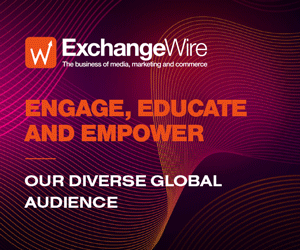Disability Representation in Advertising: How Marketers can Get it Right
by on 8th Aug 2025 in News

When it comes to representing the disabled community in advertising, how can brands and marketers get it right? We reflect on insights from Purple Goat’s Awareness to Action event.
The gap in disability representation
Improving representation within the advertising industry forms part of moving towards a more inclusive society for all. Unfortunately, for many decision makers whose priority is the bottom line, that reason isn’t enough to push for positive change.
It shouldn’t have to come down to a financial incentive, but for those who don’t already know, inclusive advertising holds huge commercial value.
Research consistently demonstrates that all groups of people respond well to inclusive advertising. The positives are not just for minority groups. According to Saïd Business School at the University of Oxford, inclusive advertising leads to 16.26% higher sales long-term and 15% higher customer loyalty. As well as that, an inclusive brand is 62% more likely to be a consumer’s first choice, and has a 54% higher pricing power, with many consumers willing to pay a premium for brands they perceive as inclusive.
Looking specifically at the disabled community, there’s a serious lack of representation. In the UK, almost a quarter (24%) of the population is disabled. While disabled people make up such a large portion of society, they account for a much smaller fraction when it comes to being represented in advertising. In 2022, only 4% of UK TV ads featured a disabled person, dropping down to only 1% for people in lead roles.
The disabled community has huge spending power, and many want to spend their money with brands who value the community. Families of disabled people in the UK spend an estimated £274bn per year. If you ignore them, another brand will come along to take their attention and money.
What does doing it right look like?
Some brands and marketers fear making a mistake when it comes to featuring people from the disabled community in their ads. What does doing it right as a brand actually look like?
At Purple Goat’s Awareness to Action event, a panel hosted by Dom Hyams, global client director at the marketing agency powered by disabled marketers and creatives, discussed how brands can do it the right way.
Elliott Millard, chief strategy officer at Thinkbox, highlighted that it’s okay to feel uncomfortable. It’s more than okay: “Embrace feeling a bit uncomfortable,” he told us.
Importantly, Dani Roberts, campaign director at Purple Goat, noted that brands should try to move beyond tokenistic representation. Tokenistic representation of a disabled person could look like representing them as inspirational, for example. Advertisers should aim to include disabled people in advertising in a way which doesn’t point specifically to their disability – as Millard put it, the person in the ad “just happens to feature someone from the disabled community.”
To move in a positive direction, Charlotte Stavrou, founder and CEO of SevenSix Agency, encouraged doing the research, and taking inspiration from other brands and campaigns. “What did you like? What didn’t you like? What would you have done differently? How can you take that into your own business?”
Marketers should also remember that the disabled community itself is very diverse, and to consider the intersectionality of overlapping identities when choosing people to work with.
Roberts expanded on the importance of having a roadmap, and the benefit of brands going beyond a one-off campaign. “Audiences will see through those one-off activations. They want to know that brands are committed longer-term, so having a long-term plan is really crucial,” she said. She explained that going beyond a one-off campaign allows brands to keep the interest of the new audiences they’ve engaged.
Ultimately, inclusion should be built into a brand or agency’s DNA. “When you’re in your next meeting, or you’re planning a campaign, stop for a minute and look around the room to see who is sitting around the table with you,” Roberts suggested. “If you’ve not got a disabled person at the table with you, or people of different ethnicities, genders, and sexualities, nine times out of ten, they’re going to be missing from the output of your campaign too.”
Creating a new norm
The panel agreed that the goal is to make more inclusive advertising the new norm. Once something becomes a norm, or it becomes clear that it's a commercial necessity, advertisers stop viewing it as a risk.
Millard drew a comparison to the rise in advertising we saw this year surrounding the Women’s Euros, which attracted a much larger number of advertisers than the previous Women’s Euros event in 2022. “Advertisers go where the eyeballs are,” he stated.
Similarly, Stavrou noted, “If some of the top ten performing creators out there happened to be from the disabled community, people would just work with them because they had to.”
As the conversation drew to a close, Millard summed up the discussion: “The advertising industry is very good at holding up a mirror to society…I think the advertising industry can also change and create society. The only way we can do that is to demonstrate that this is not just a moral imperative, there is money to be made. That is how we fight back.”
AdvertiserAdvertisingBrandsDiversity











Follow ExchangeWire